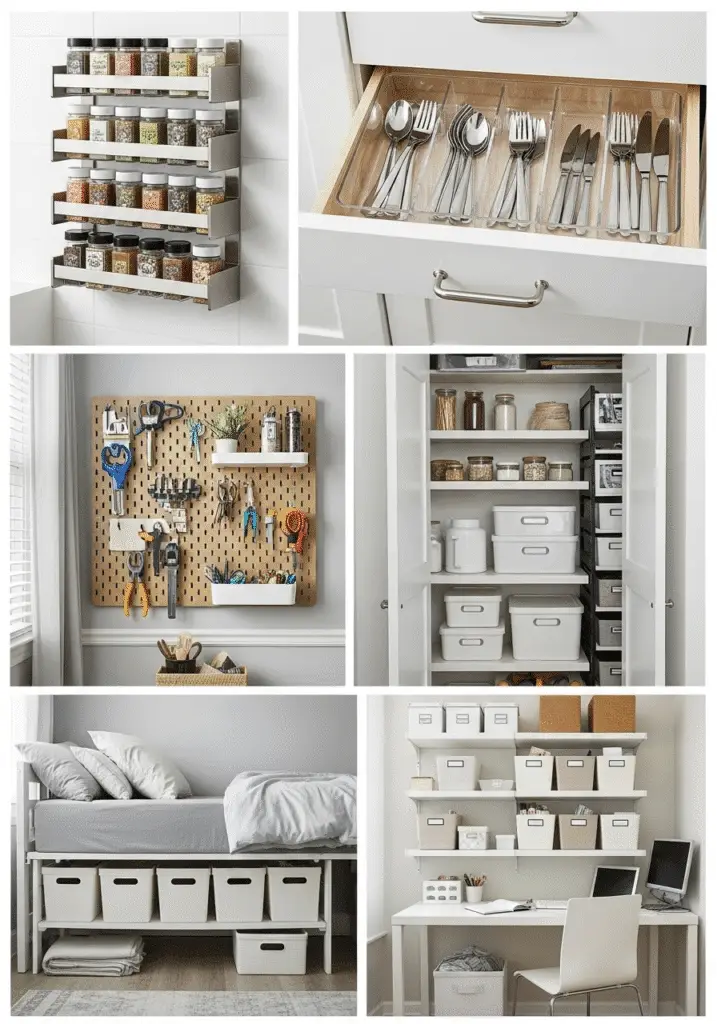Introduction
In the age of remote work, a thoughtfully designed home office is more than just a nice-to-have—it’s a productivity powerhouse and a reflection of your lifestyle. Whether you’re a freelancer managing client projects, a remote employee attending daily Zoom meetings, or a student looking for a distraction-free study zone, your workspace directly affects how efficiently and comfortably you can get things done.
This comprehensive guide offers practical, creative, and stylish home office setup ideas tailored for every budget, room size, and work need. From selecting the perfect ergonomic furniture to optimizing lighting, storage, and decor, we walk you through step-by-step ways to create a space that supports focus, creativity, and work-life balance. You’ll also learn about digital tools, cable management hacks, and personalized touches that make your workspace both functional and inspiring.
Whether you’re working from a full-sized home office, a quiet corner in your bedroom, or a converted closet nook, this article will help you design a space that boosts productivity while reflecting your personal style. Get ready to transform your home into a professional, comfortable, and motivating environment—one that truly works for you.
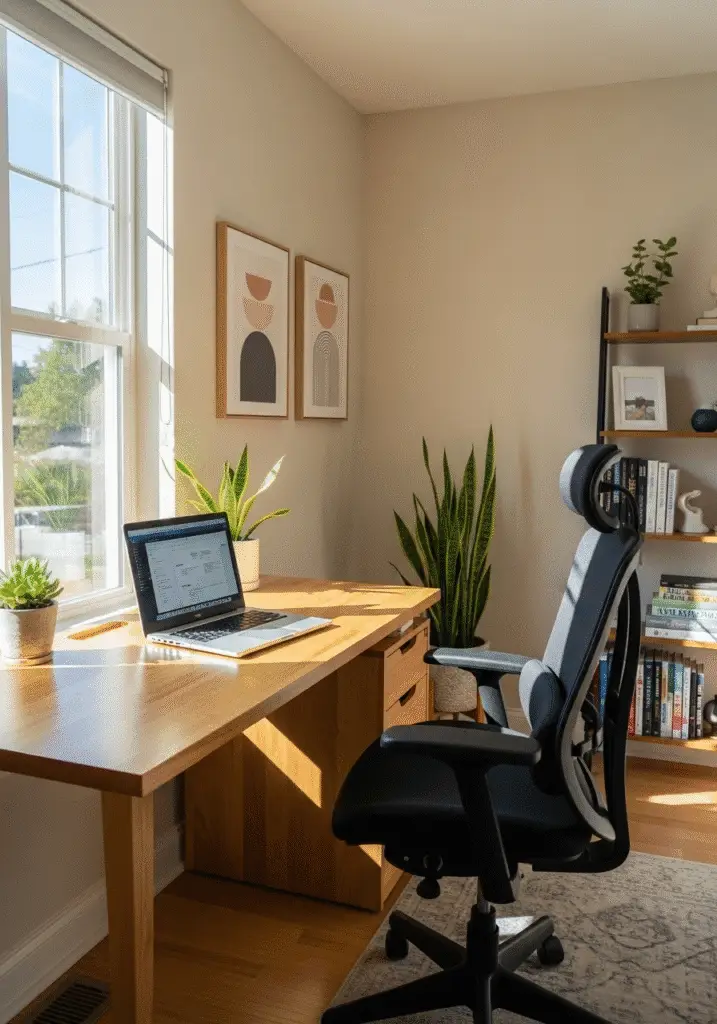
Why a Dedicated Home Office Matters
In today’s world where the lines between work and home life are often blurred, having a dedicated home office is not just a matter of convenience—it’s a powerful tool for achieving balance, focus, and professional success. When you carve out a specific area in your home solely for work, you signal to your brain that it’s time to shift into a productive mindset. This psychological separation is essential for reducing distractions and staying in “work mode” during office hours, even when you’re just steps away from your living room or kitchen.
Without a clearly defined workspace, it’s easy to fall into bad habits—like working from the couch, constantly multitasking, or blending personal and professional tasks throughout the day. Over time, this can lead to reduced productivity, mental fatigue, and burnout. On the other hand, a purpose-built home office, no matter how big or small, helps reinforce structure in your daily routine and sets the tone for focused work.
A dedicated office area also allows you to organize your tools, documents, and tech setup in a way that enhances efficiency. Everything you need is within reach, reducing time wasted looking for files or accessories. Ergonomically designed furniture can reduce physical strain, while proper lighting and thoughtful decor can uplift your mood and improve overall job satisfaction.
Moreover, when your workspace is separate from your personal zones, you’ll find it easier to “clock out” at the end of the day. This boundary is essential for preserving your mental well-being and maintaining a healthier work-life balance. You’ll be able to enjoy your evenings without the lingering stress of unfinished work in view.
In short, a dedicated home office isn’t just about aesthetics—it’s a strategic investment in your focus, energy, and career growth. Whether you have an entire room to spare or just a small nook, creating a clearly defined work environment can dramatically improve how you show up for your job every single day.
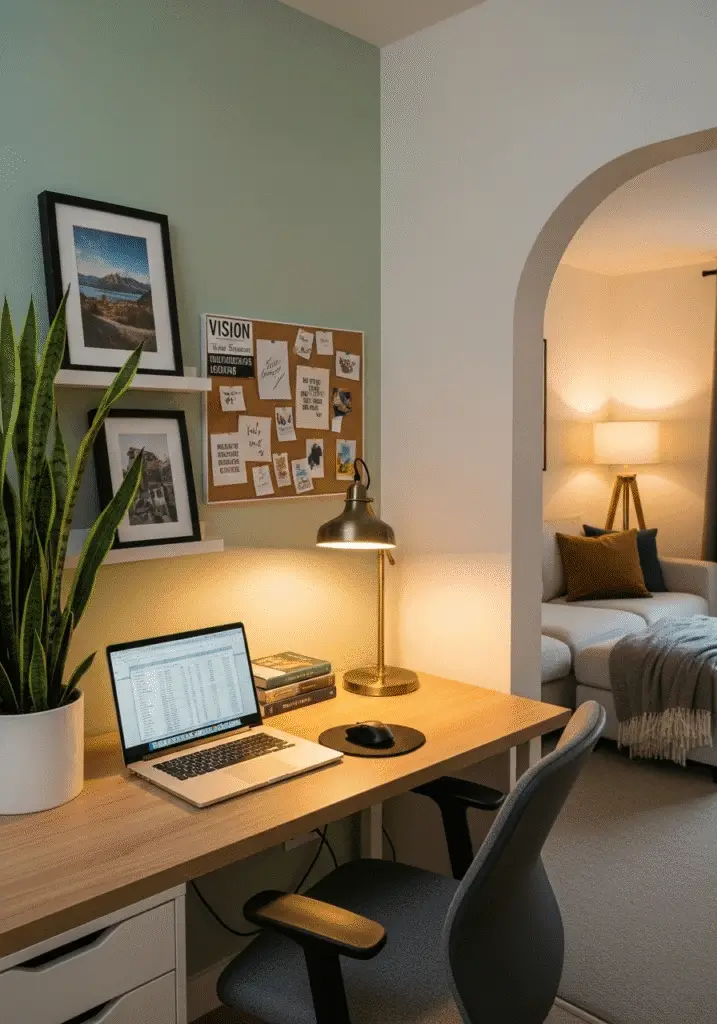
Choosing the Right Location
One of the most important—and often overlooked—steps in creating a functional home office is selecting the right location. While having a spare room is ideal, it’s certainly not a requirement. With thoughtful planning, even a small nook or unused corner of your living space can be transformed into a highly productive and inspiring work zone. The key is to prioritize privacy, comfort, and minimal distractions, so you can focus without feeling disconnected from your home environment.
1. Look for Quiet Areas
Start by identifying the quietest areas in your home. Ideally, your workspace should be located away from high-traffic areas like the kitchen, living room, or entryway. Think about when and where noise levels are typically lowest during your work hours. Bedrooms, hallways, under-the-stairs spaces, or even a guest room can make excellent office zones if they’re not heavily used during the day. A peaceful setting will help you concentrate, reduce stress, and communicate more clearly during virtual meetings.
2. Maximize Natural Light
Whenever possible, position your desk near a window. Exposure to natural light is proven to boost mood, increase energy, and even improve sleep quality—all of which contribute to better focus and productivity. Sunlight also helps reduce eye strain caused by prolonged screen use. If your ideal location doesn’t have access to natural light, consider using a daylight-simulating desk lamp to mimic the effect. Good lighting is essential, not just for your physical health, but also for the ambiance and motivation it brings.
3. Minimize Distractions
Avoid setting up your home office in areas where distractions are common. Kitchens often come with the temptation to snack or engage in conversations. Playrooms and TV rooms might bring in too much background noise or foot traffic, especially if you live with kids or roommates. Instead, choose spaces where you can maintain a professional environment—both for yourself and for those you may interact with on video calls. You can even create visual and psychological boundaries using a room divider, curtain, or bookshelf if a separate room isn’t an option.
4. Consider Connectivity and Accessibility
Make sure your chosen spot has reliable access to electrical outlets and strong Wi-Fi. If your work depends on video conferencing, uploading files, or using cloud-based tools, a stable internet connection is non-negotiable. Also, think about how easily you can access work materials, office supplies, or a printer from your chosen location to avoid unnecessary movement that interrupts your flow.
In essence, the best location for your home office is one that supports your daily workflow while offering a sense of calm and separation from your personal life. Whether it’s a dedicated room, a window-side alcove, or a converted closet, what matters most is how well the space helps you concentrate, stay organized, and feel inspired to do your best work.
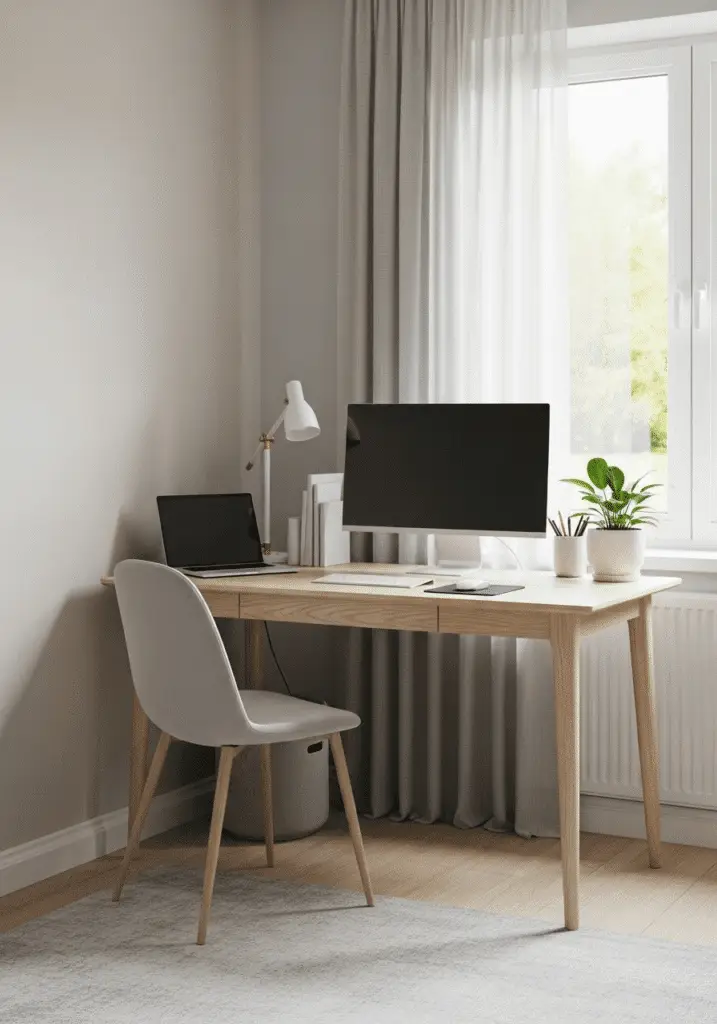
Essential Furniture for Your Home Office
A productive home office begins with the right furniture setup—specifically your desk and chair. These two pieces form the foundation of your workspace, and choosing the right ones can have a significant impact on your comfort, health, and overall productivity. Whether you have an entire room to work with or you’re transforming a small corner, investing in the right furniture will make your work-from-home experience smoother and more sustainable.
1. Choosing the Right Desk
Your desk is your command center. It holds your computer, notepads, office supplies, and perhaps even your coffee mug and plant. That’s why it’s crucial to choose one that fits your available space and your workflow needs. For most people, a desk with ample surface area is important so that you can spread out documents, use dual monitors, or keep your tools within reach.
If you’re working in a compact space, don’t worry—there are many space-saving desk options available. Consider:
- Wall-mounted desks: These fold up when not in use, helping to maximize floor space.
- Corner desks: Ideal for fitting into awkward or unused corners.
- Standing desks or adjustable desks: Promote better posture and allow you to switch between sitting and standing throughout the day.
Look for desks that also offer built-in storage or shelving, so you can keep clutter off the main surface and maintain an organized work zone.
2. Investing in an Ergonomic Chair
Next to your desk, your chair is the most important investment in your home office. Sitting for extended periods can take a toll on your back, neck, and shoulders—especially if your chair doesn’t support proper posture. An ergonomic office chair with adjustable height, lumbar support, and armrests is ideal for maintaining spinal alignment and reducing physical fatigue during long work hours.
However, if a high-end chair isn’t within your budget, don’t worry. You can enhance any basic chair by using:
- A lumbar support cushion to reduce lower back strain.
- Seat cushions to relieve pressure on hips and tailbone.
- Footrests to ensure your legs are at a comfortable angle.
The goal is to maintain a natural sitting position: feet flat on the floor, knees at a 90-degree angle, and back supported to prevent slouching.
3. Other Optional But Helpful Additions
While your desk and chair are non-negotiable, there are a few other furniture items worth considering:
- Filing cabinets or mobile storage carts for organizing paperwork and supplies.
- A small bookshelf for keeping reference materials or personal touches.
- A side table or floating shelf to hold a printer, scanner, or additional electronics.
Remember, your furniture doesn’t have to be expensive or brand-new. What matters most is that it supports your daily work needs, helps you maintain good posture, and fits well within your designated office space.
4. Balance Function with Style
Finally, while comfort and functionality should come first, don’t forget about aesthetics. A workspace that looks good can be incredibly motivating. Choose furniture in colors and materials that match your home’s overall style—whether it’s modern, minimalist, rustic, or eclectic. This will help your office blend in seamlessly with your home and make it a space you actually enjoy spending time in.
In summary, the right home office furniture should combine practicality, comfort, and style. Whether you’re working with a full room or a tight corner, prioritizing ergonomics and organization will create a foundation for long-term productivity and wellness.
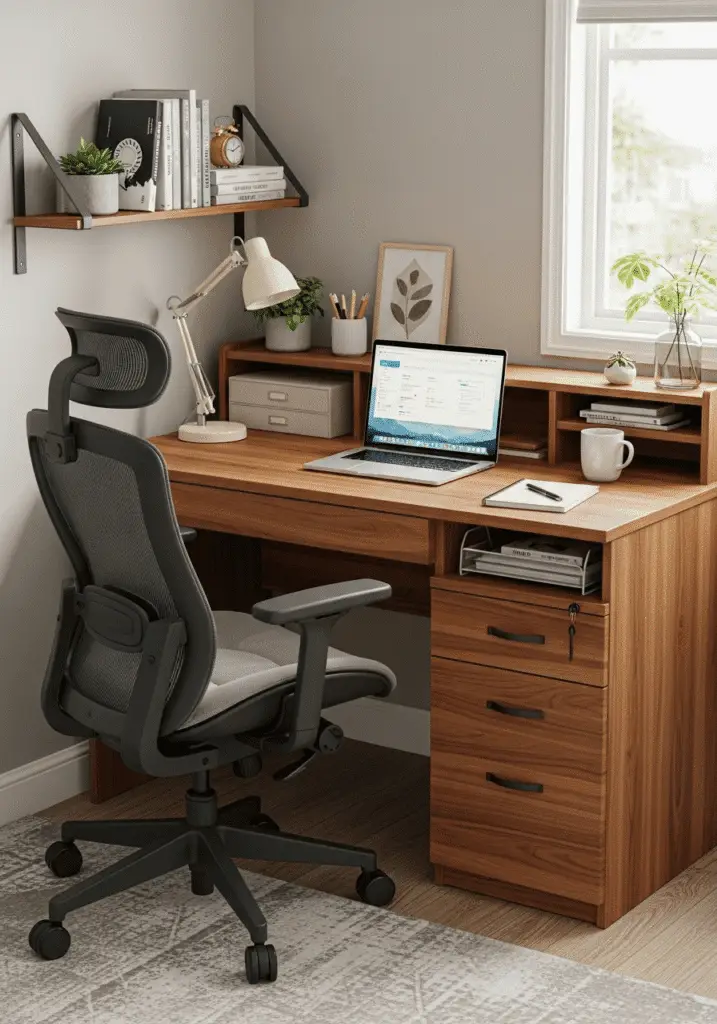
Ergonomics: Comfort Meets Productivity
When it comes to building an effective home office, ergonomics should never be an afterthought. In fact, it’s one of the most critical aspects of any workspace—especially when you spend hours sitting at a desk, staring at a screen. Poor ergonomics can lead to a range of health issues including back pain, neck stiffness, wrist strain, and even chronic fatigue. Over time, these physical discomforts can decrease your concentration and productivity, not to mention negatively affect your overall well-being.
The good news? A few simple adjustments can go a long way in creating a more comfortable and health-conscious workspace. Let’s explore the essential ergonomic tips and tools that can help you work smarter and healthier from home.
1. Monitor Placement Matters
One of the most common causes of neck and eye strain is an improperly placed monitor. Your computer screen should be positioned at eye level, about 20–30 inches away from your face. This keeps your head in a neutral position and minimizes the need to tilt or lean forward, which can cause tension in your neck and shoulders. If you’re using a laptop, consider investing in a monitor riser or laptop stand to bring the screen up to eye level, and always pair it with a separate keyboard and mouse for better alignment.
2. Use the Right Typing Position
When typing, your elbows should be bent at approximately 90 degrees and remain close to your body. Wrists should be kept in a neutral (straight) position—not bent upward or downward. A wrist rest or an ergonomic keyboard can help maintain this alignment and reduce the risk of repetitive strain injuries such as carpal tunnel syndrome. For laptop users, this setup is especially important, as built-in keyboards often force you into awkward angles.
3. Sit with Proper Posture
Your chair should support your lower back’s natural curve, and you should sit in a position where:
- Your feet are flat on the floor or on a footrest
- Knees are at or slightly below hip level
- Back is fully supported, ideally with lumbar support
- Shoulders are relaxed, not hunched or rounded
If your chair doesn’t have built-in lumbar support, a small cushion or rolled-up towel can do the trick. Keeping your posture aligned helps prevent muscle fatigue and supports better circulation throughout the workday.
4. Incorporate Ergonomic Accessories
Ergonomic tools and accessories can make a big difference in how your body feels after a full workday. Here are a few worthwhile additions:
- Monitor risers or stands to elevate screens to eye level
- Standing desks or adjustable sit-stand desks to reduce prolonged sitting
- Wrist rests for your mouse and keyboard to reduce pressure on your joints
- Footrests to support your legs and improve circulation
These additions don’t have to be expensive. Even DIY solutions—like stacked books under a laptop or a sturdy box for a footrest—can be effective.
5. Take Movement Breaks
Even the best ergonomic setup can’t replace the need for movement and breaks. Every 30 to 60 minutes, stand up, stretch, or walk around the room. Consider setting a timer or using a productivity app to remind yourself to take short breaks throughout the day. This not only helps reduce physical strain but also keeps your mind sharp and your energy levels up.
6. Don’t Forget Eye Health
Staring at screens for long hours can lead to digital eye strain. Follow the 20-20-20 rule: every 20 minutes, look at something 20 feet away for at least 20 seconds. Also, ensure that your workspace is well-lit to reduce glare and adjust your screen brightness to match the ambient lighting of the room.
By implementing proper ergonomics in your home office, you’re not just creating a more comfortable work environment—you’re protecting your long-term health and ensuring better focus and productivity. Remember, a few mindful adjustments today can prevent chronic issues tomorrow. A healthy body supports a productive mind, and with the right ergonomic setup, your home office can serve you well for years to come.
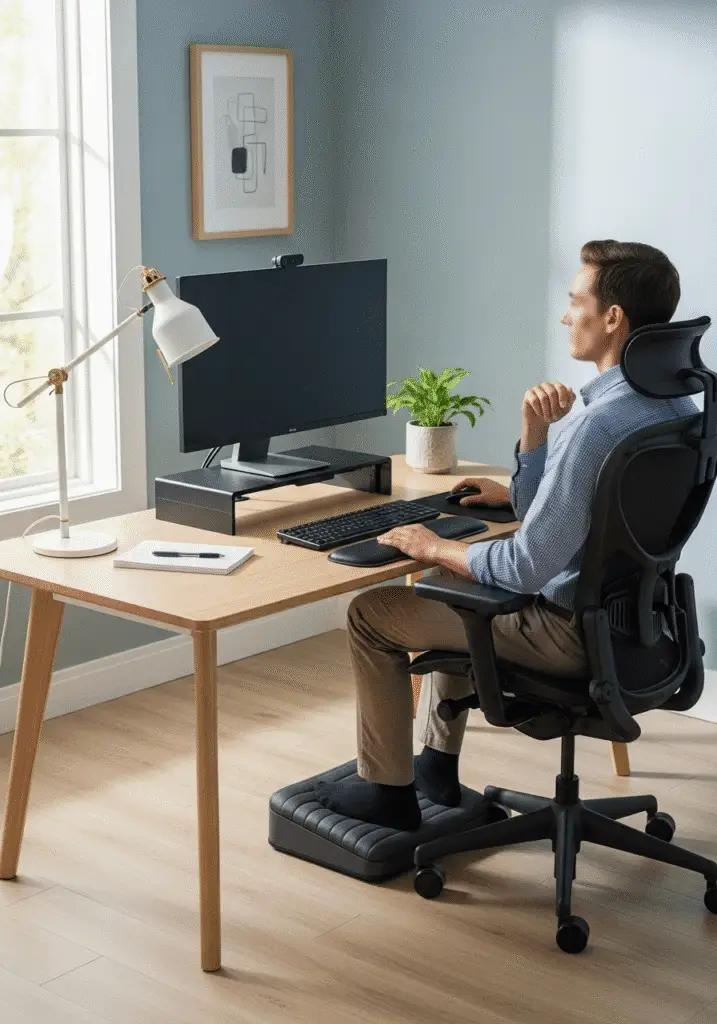
Lighting Ideas to Brighten Up the Space
Lighting is one of the most overlooked yet critical elements in home office design. It not only affects how well you can see your work but also influences your mood, energy levels, and overall productivity. Poor lighting can cause eye strain, headaches, and fatigue, especially during long work hours in front of a screen. On the other hand, well-planned lighting creates a vibrant and comfortable environment that encourages focus and reduces stress.
Whether you’re working in a large dedicated room or a compact office nook, investing in the right lighting setup can make all the difference. The key is to layer your lighting using a combination of natural light, ambient lighting, and task lighting to create a balanced and visually comfortable space.
1. Embrace Natural Light
If your home office has access to a window, make the most of it. Natural light not only reduces the need for artificial lighting during the day but also has proven benefits for your mental and physical health. Exposure to daylight boosts your mood, regulates your sleep-wake cycle, and increases alertness—all crucial for a productive workday.
Ideally, place your desk facing the window or positioned sideways to benefit from soft, diffused light. This setup reduces screen glare and helps you avoid harsh shadows. Use sheer curtains or adjustable blinds to control brightness and prevent direct sunlight from washing out your screen or creating uncomfortable heat.
2. Install Ambient Lighting
While natural light is ideal during daylight hours, you’ll still need ambient lighting to fill the room, especially during early mornings, cloudy days, or evening work sessions. Ambient light acts as the general illumination source and typically comes from ceiling fixtures, overhead lights, or floor lamps.
Choose lighting that distributes soft, even brightness across the entire space without casting harsh shadows. If your existing room light is too dim or overly fluorescent, consider upgrading to LED ceiling lights or pendant lights that provide clean, energy-efficient light without flicker or glare. You can also install dimmable lights to customize brightness based on the time of day or task at hand.
3. Add Focused Task Lighting
For more precise work—like reading documents, writing notes, or typing on a keyboard—task lighting is essential. The most common type is a desk lamp with an adjustable arm, which allows you to position the light exactly where you need it without straining your eyes.
When choosing a desk lamp, look for models with brightness control, adjustable color temperature, and a flexible neck. Position the lamp on the opposite side of your dominant hand to prevent casting shadows over your workspace. If you’re left-handed, place the lamp on the right side of the desk, and vice versa.
4. Use Warm, Daylight-Mimicking LEDs
The color temperature of your lights plays a big role in your home office ambiance. Warm-toned LED bulbs (typically around 2700K–3500K) mimic natural daylight and create a cozy yet energetic atmosphere that feels inviting rather than sterile. These lights are perfect for keeping you alert during the day while still providing a sense of calm as the evening sets in.
Avoid using overly cool or blue-toned lighting, especially later in the day, as it can disrupt your circadian rhythm and negatively impact sleep quality. Smart bulbs that let you adjust the color temperature and brightness throughout the day can be an excellent addition to your setup.
5. Light Layering for Comfort and Function
The secret to optimal home office lighting is layering different types of light to create depth and dimension. This means using a mix of natural light, ambient light, and task lighting—each serving a specific purpose. Together, they provide both function and style, allowing you to transition seamlessly from bright, energetic mornings to calm, focused evenings.
Bonus Tip: If your workspace doubles as a guest room or study nook, consider installing LED strip lights or under-shelf lighting to add soft, modern accents that improve visibility without overwhelming the space.
By prioritizing good lighting in your home office, you’re not just improving visibility—you’re actively enhancing your health, mood, and productivity. A well-lit space invites clarity and focus while reducing the risk of eye strain and fatigue. With just a few lighting upgrades, your home office can feel brighter, more welcoming, and perfectly suited for the workday ahead.
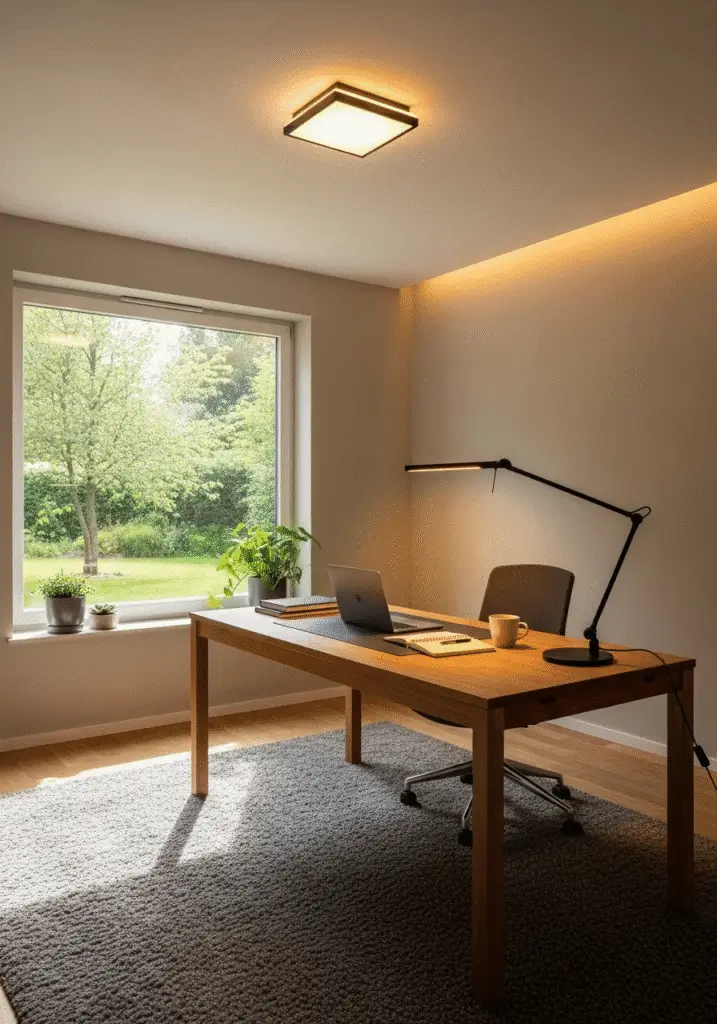
Storage and Organization Hacks
A cluttered workspace is a cluttered mind. When your home office is disorganized, it doesn’t just affect the appearance of your space—it also disrupts your workflow, drains mental energy, and makes it harder to stay focused. The good news is, you don’t need a massive office or expensive furniture to stay tidy. With a few smart storage and organization hacks, you can turn even a small space into a well-oiled productivity zone.
From clever use of vertical areas to stylish and functional storage solutions, these strategies will help you reduce clutter, stay organized, and boost efficiency, all while maintaining a clean and visually pleasing workspace.
1. Maximize Vertical Space
When floor space is limited, think vertically. The walls around your desk are valuable real estate for keeping things off your work surface. Consider:
- Floating shelves: Perfect for storing books, plants, or decorative pieces that make your office feel more personal.
- Pegboards or wall grids: Great for hanging office supplies like scissors, headphones, cords, and even mini bins or baskets.
- Wall-mounted file organizers: Keep paperwork or important mail in view but off the desk.
These vertical options keep your desktop clear, which can dramatically improve your concentration and reduce visual noise.
2. Use Drawer Organizers
Drawers often become catch-all spaces that are easy to lose control of. To prevent this, use drawer dividers or trays to compartmentalize items like pens, chargers, notepads, sticky notes, and paper clips. This helps you find what you need quickly and avoids unnecessary desk clutter.
If you don’t have built-in drawers, rolling storage carts with removable trays can be an excellent alternative. They’re mobile, compact, and highly versatile.
3. Create a Filing System
Loose papers and documents can pile up quickly, leading to frustration and lost time. Establish a clear filing system using:
- Labeled folders
- Accordion organizers
- Desktop filing trays
- Filing cabinets (lockable options are ideal for sensitive materials)
Group your paperwork by category (e.g., invoices, receipts, contracts, project notes) and label each file clearly. This keeps important information accessible and makes decluttering easier over time.
4. Incorporate Decorative Storage
Who says storage has to be boring? Use stylish baskets, bins, or boxes that double as decor. These can hold:
- Chargers and cords
- Office supplies like sticky notes, pens, or clips
- Small electronics such as tablets or headphones
Choose woven baskets, fabric bins, or boxes with lids to keep everything contained and visually pleasing. Decorative storage not only hides clutter but also adds warmth and personality to your workspace.
5. Label Everything
Clear labels are your best friend when it comes to long-term organization. Use a label maker, chalkboard tags, or printable labels to mark the contents of drawers, bins, folders, and shelves. This simple step ensures that everything has a designated place, making it easier to clean up and maintain order.
6. Keep Essentials Within Arm’s Reach
To stay efficient during your workday, only keep the most-used items within reach—like your computer, notebook, pens, or planner. Everything else should have its place but be stored out of the way to minimize distractions. A clutter-free desk promotes mental clarity and helps you stay in the flow of your work.
7. Declutter Regularly
Set aside time every week to go through your workspace and clear out items you no longer need. Toss old notes, shred outdated documents, and return misplaced items to their proper storage. A five-minute decluttering routine can save you hours of frustration down the road.
By implementing these home office organization hacks, you can turn any space—no matter how small—into a tidy, functional, and inspiring environment. When everything has its place and your tools are easy to access, you’re free to focus fully on your work. Remember: an organized workspace isn’t just about aesthetics; it’s a key contributor to your daily productivity and peace of mind.
